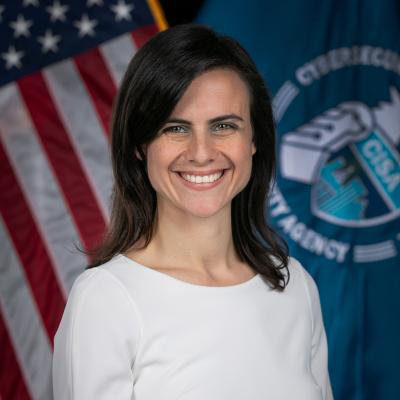Massachusetts’ 2023/24 legislative session closed in the morning of Aug. 1 without any significant climate or clean energy legislation despite broad agreement on proposed clean energy permitting and siting reforms.
The 19-month session came down to an unsuccessful last-ditch effort to reconcile the differences between separate omnibus climate bills passed by the House and Senate. Lawmakers continued to work into the late hours of the session’s final day but failed to reach a deal.
The separate climate bills passed by the House and Senate contained similar language to streamline and expedite permitting and siting for clean energy generation projects and grid infrastructure. This framework came out of an extended process of negotiations and stakeholder engagement. (See Mass. Commission Issues Recs on Energy Project Siting, Permitting.)
Dan Dolan, president of the New England Power Generators Association, called the failure to pass permitting reform a “huge opportunity missed with agreement among so many of the major elected and industry players.”
Beyond the permitting aspects, the Senate bill contained language intended to enable the state’s transition away from natural gas. It also sought a ban on the practice of competitive electricity supply and would have revamped the state’s clean energy procurement process.
The House bill largely sidestepped the gas and competitive electricity supply issues and contained a separate set of procurement provisions. Both bills contained language intended to boost electric vehicles. (See Mass. Legislature Faces Looming Deadline to Pass Permitting Reform.)
Rep. Jeff Roy (D), the top House negotiator in the conference committee formed to resolve the differences in the climate bills, indicated to reporters that the failure stemmed from the Senate’s ambition to do “too much beyond” the permitting and siting reforms that were common to both bills. Meanwhile, Sen. Mike Barrett (D), the top Senate negotiator, pointed the blame at gas utility lobbyists for blocking common-sense gas reforms.
The Senate bill would have updated the state’s replacement program for leaking gas pipes, adding the option of pipe repairs and retirement. It also would have amended the utilities’ mandate to provide gas service to customers, “enabling the [regulatory] agencies to retire the natural gas system one block at a time when a technology exists to keep that block warm and safe through other means,” Barrett told NetZero Insider.
These proposals echoed the majority recommendations — issued in January — of a stakeholder working group focused on the issue. (See Mass. Gas Working Group Finalizes Recommendations to Legislature.) Within the working group, the gas utilities opposed several of the recommendations, including the proposal to enable the gas utilities to “terminate natural gas service to a customer” if other heating technologies are available.
Barrett said the gas reforms are essential to limiting overall energy costs for Massachusetts residents as grid infrastructure costs increase. He added that legislation addressing gas emissions likely is necessary for the state to meet its climate mandates, which include a 49% reduction in emissions from buildings by 2030.
Rep. Roy did not respond to comment requests in time for publication. He has indicated that permitting and siting reforms were his top issue for the session and appeared to be willing to pass a bill focused just on this issue.
In a statement, Executive Office of Energy and Environmental Affairs Secretary Rebecca Tepper emphasized the importance of permitting and siting reform to meeting the state’s climate mandates.
“We’ll continue conversations with the Legislature to pursue these reforms,” Tepper added.
Meanwhile, climate advocates expressed outrage that the legislature ended the two-year session empty handed.
“I am shocked and appalled that the Legislature has left the building with nothing to show for climate policy,” said Claire-Karl Müller, coordinator of the Mass Power Forward coalition. “Flood and fires and heat waves don’t adjourn for the summer, and this failure of action impacts real people’s lives.”
Larry Chretien, executive director of the Green Energy Consumers Alliance, said the failure to pass gas reforms will threaten the state’s climate goals, pointing to data that indicates building sector emissions in the state increased between 2020 and 2021, and likely increased between 2021 and 2022.
John Walkey of the environmental justice organization GreenRoots expressed dismay that legislators were unable to reach any compromises on climate and pointed the blame at top legislators.
“The way we’ve set up our legislature is such that nothing moves without leadership’s say,” Walkey said. “These folks need to be cutting deals and making things happen … we’re going to be fried to a crisp before our leaders get over their egos.”
Lawmakers have signaled their interest in returning prior to the next session to attempt to pass an economic development bill. Gov. Maura Healey (D) on Aug. 2 urged the legislature to return for a special session, and both the Senate President and the House Speaker have indicated a willingness to do so.
It’s unclear whether a special session would include work on a compromise climate bill. If lawmakers cannot pass the climate bill via special session, the conference committee could continue working while on recess this fall and try to pass a bill when the next session begins in January.
Climate advocates called on lawmakers to pursue a bill as quickly as possible, noting that permitting reforms — even if passed — would take significant time to be established and take effect.
“I think this really is a question of what is your political will to do anything?” Walkey said.
